
Mastering Lumion 3D
¥80.65
This book is designed for all levels of Lumion users; from beginner to advanced, you will find useful insights and professional techniques to improve and develop your skills in order to fully control and master Lumion.
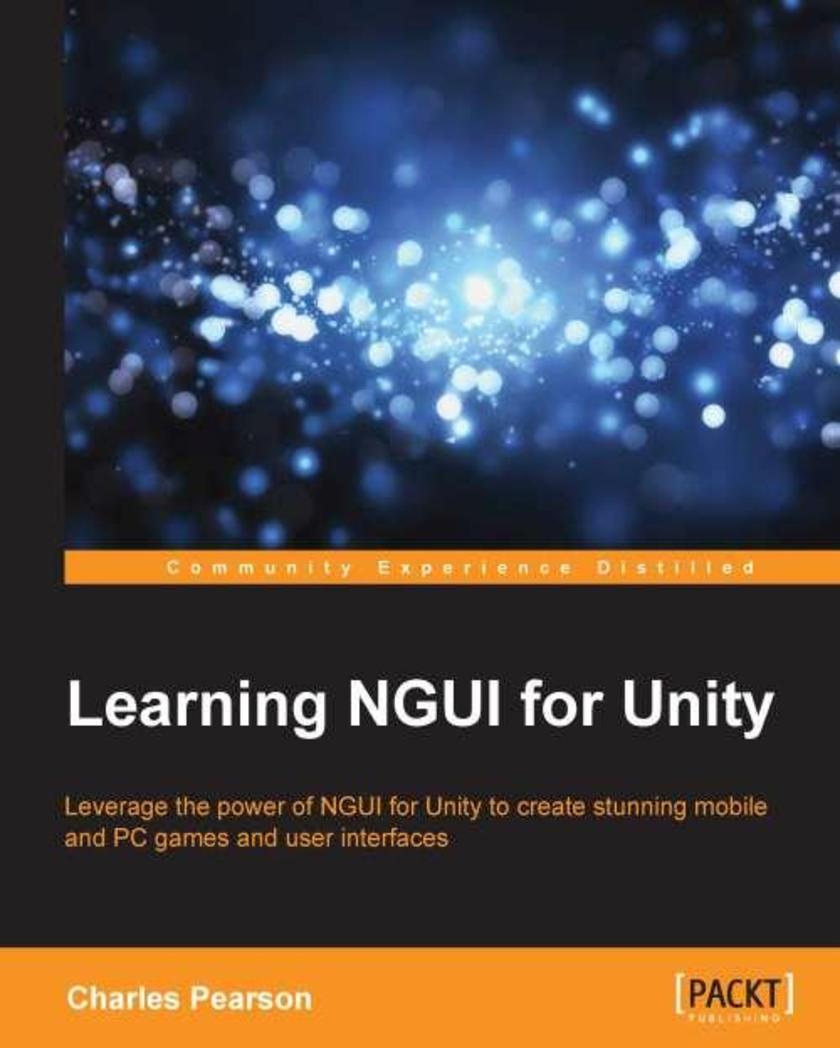
Learning NGUI for Unity
¥80.65
If you are a Unity 3D developer who wants to create an effective and user-friendly GUI using NGUI for Unity, then this book is for you. Prior knowledge of C# *ing is expected; however, no knowledge of NGUI is required.
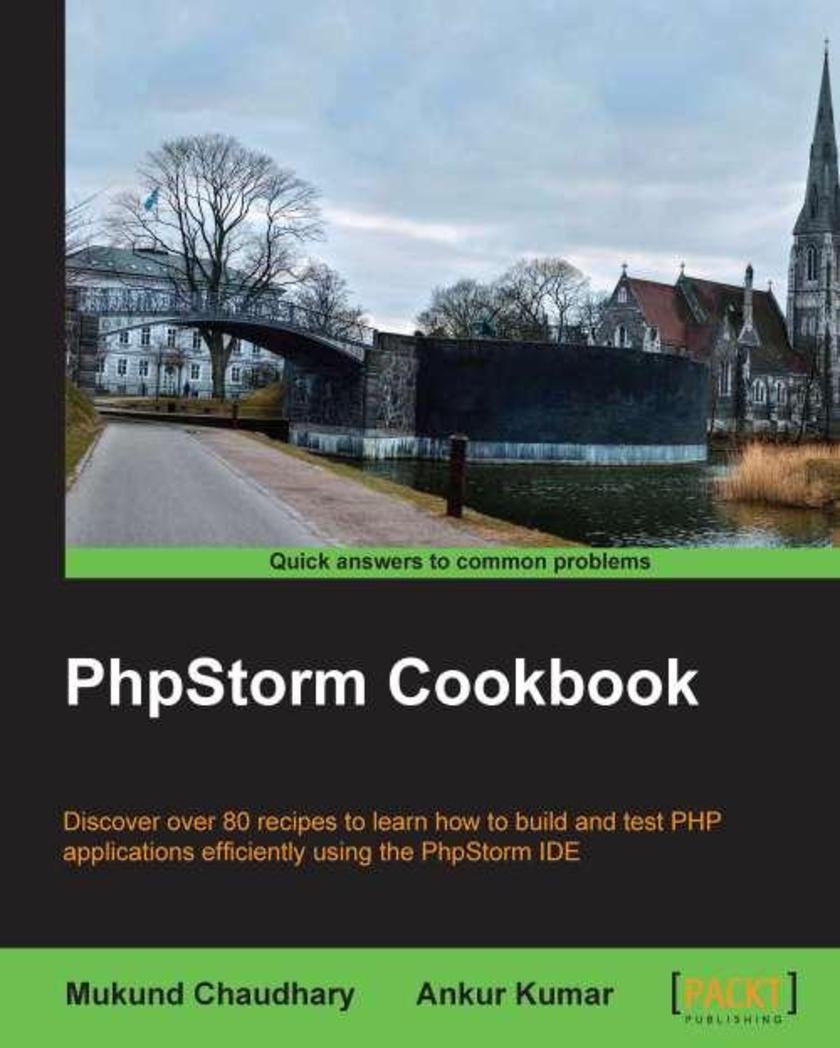
PHPStorm Cookbook
¥80.65
If you are a competent PHP developer who knows the basics of PHPStorm and intends to gain better knowledge of PHPStorm by learning and implementing pro-level practices, techniques, and solutions, then this book is for you. It is assumed that you already have a working installation of the software setup.
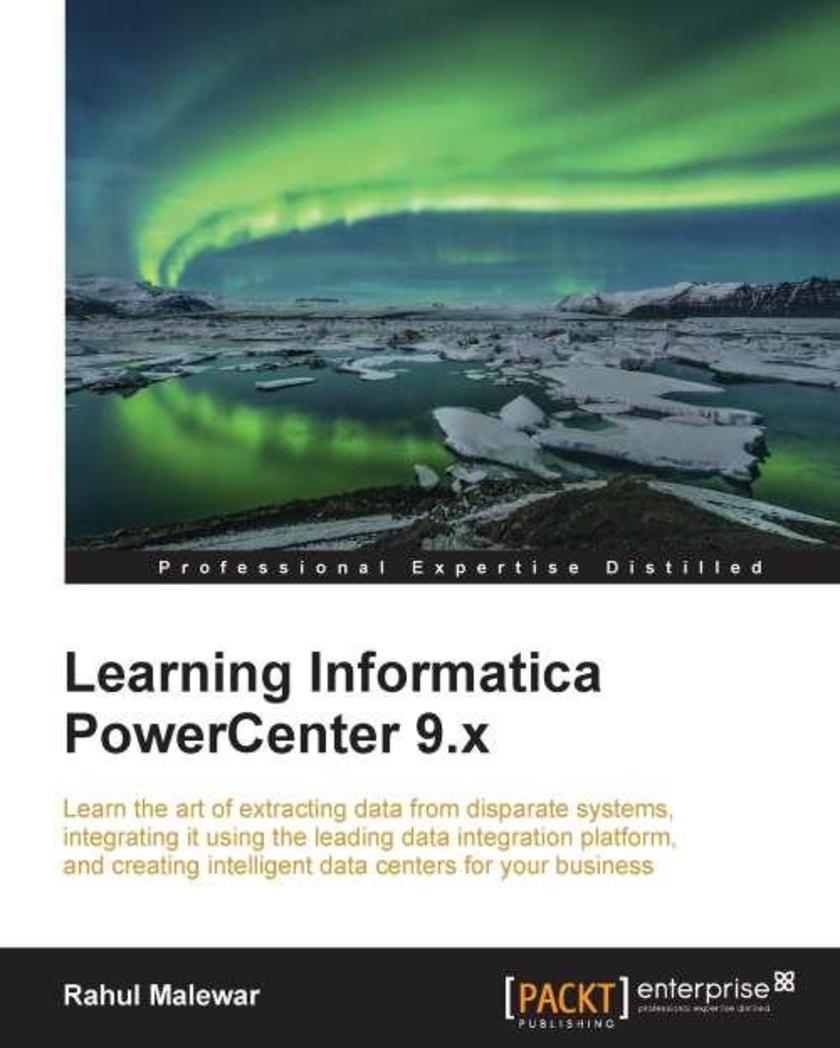
Learning Informatica PowerCenter 9.x
¥80.65
If you wish to deploy Informatica in enterprise environments and make a career in data warehousing, then this book is for you. Whether you are a developer who's new to Informatica or an experienced professional, you will learn all the features of Informatica. Basic knowledge of programming and data warehouse concepts is essential.

Mastering JavaScript Design Patterns
¥80.65
If you are a developer interested in creating easily maintainable applications that can grow and change with your needs, then this book is for you. Some experience with JavaScript (not necessarily with entire applications written in JavaScript) is required to follow the examples written in the book.
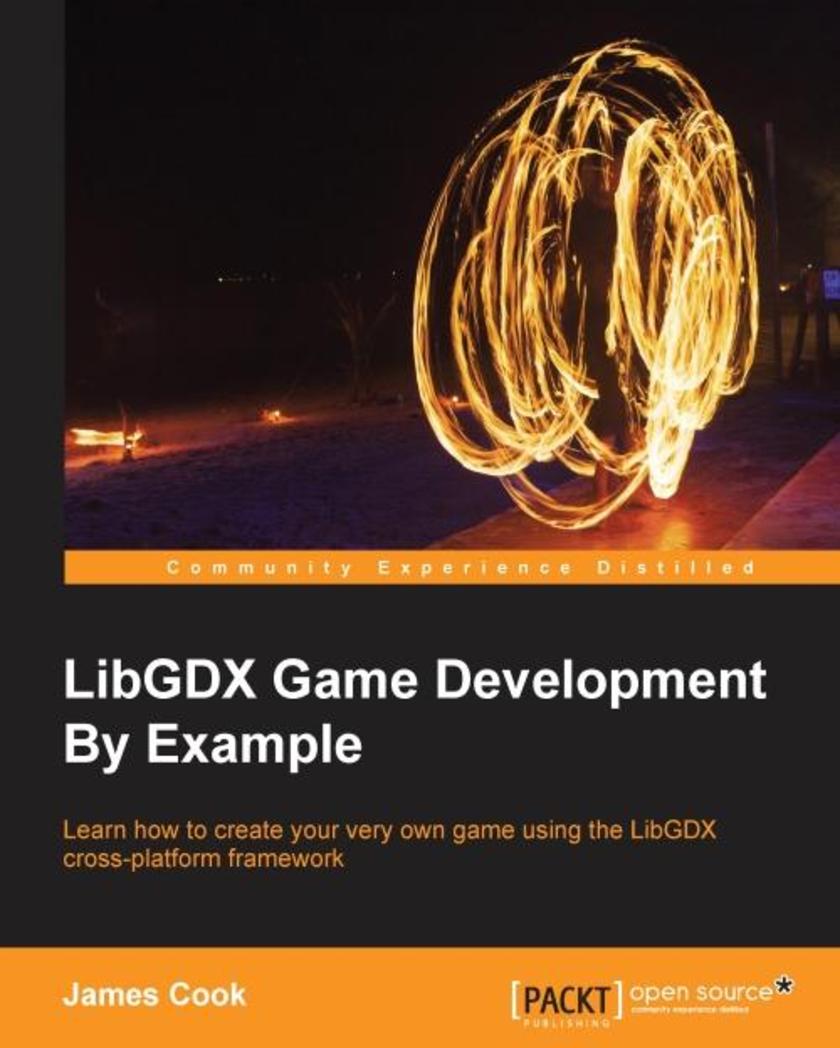
LibGDX Game Development By Example
¥80.65
This book is intended for those who wish to learn the concepts of game development using LibGDX. An understanding of Java and other programming languages would definitely be helpful, although this is not a must.
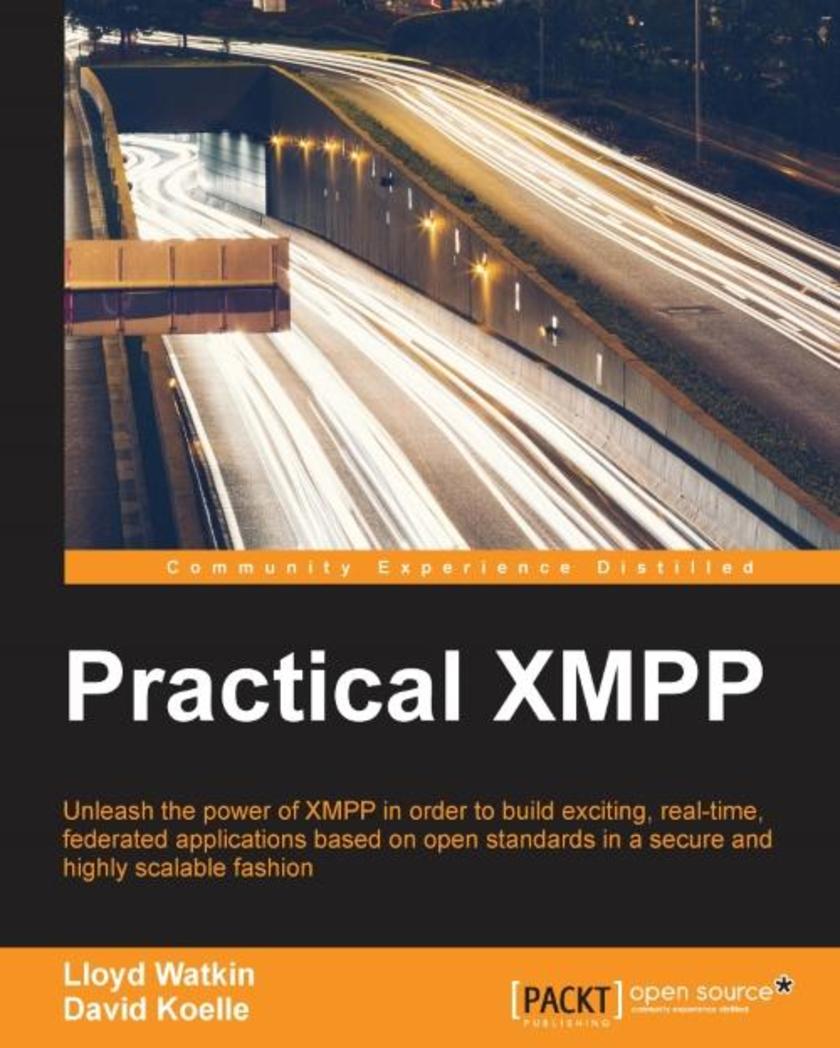
Practical XMPP
¥80.65
Unleash the power of XMPP in order to build exciting, real-time, federated applications based on open standards in a secure and highly scalable fashion About This Book Learn about the fundamentals of XMPP and be able to work with the core functionality both server-side and in the browser Build a simple 1-to-1 chat (the “Hello World” of XMPP), explore multi-user chat, publish subscribe systems, and work with a decentralized social network Author Lloyd Watkins is a member of the XMPP standards committee Who This Book Is For If you want to learn about the fundamentals of XMPP, be able to work with the core functionality both server-side and in the browser then this book is for you.No knowledge of XMPP is required, or of TCP/IP networking. It's important that you already know how to build applications of some form, and are looking get a better understanding of how to implement XMPP for one or more of its many uses. You should be interested in the decentralized web, know HTML, and likely know JavaScript and NodeJS. You will probably know JSON, and hopefully XML (this is the native output of XMPP). What You Will Learn Install and configure an XMPP server and use it to connect from a traditional desktop client and send a message Build a simple server-side application that will respond to messages from our logged in desktop client Install and run XMPP-FTW, connect to the server from the browser, and handle incoming/outgoing messages Connect to a multi-user chat room, send/receive stanzas, add a room password, join a protected room, set the room’s subject, and change a user's affiliation Get to grips with the publish-subscribe extension of XMPP and use it to build a pusher system that can make any website real-time Build a simple XMPP component and create an extension for XMPP-FTW that allows you to use your own custom format Build an XMPP version of the classic game “Pong” In Detail XMPP (eXtensible Messaging and Presence Protocol) is a messaging protocol that enables communication between two or more devices via the Internet. With this book, developers will learn about the fundamentals of XMPP, be able to work with the core functionality both server-side and in the browser, as well as starting to explore several of the protocol extensions. You will not only have a solid grasp of XMPP and how it works, but will also be able to use the protocol to build real-world applications that utilize the power of XMPP. By the end of this book, you will know more about networking applications in general, and have a good understanding of how to extend XMPP, as well as using it in sample applications. Style and approach Through a number of hands-on projects, this book shows you how to build usable applications that highlights a feature of XMPP.
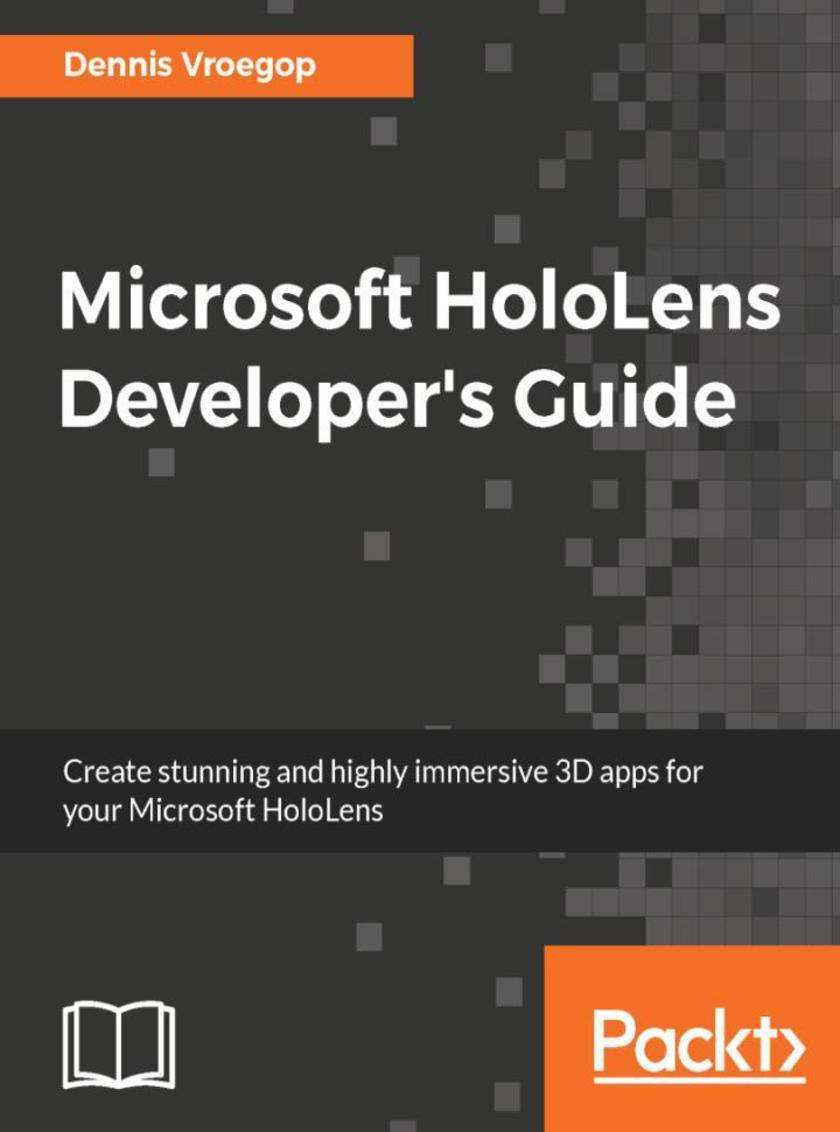
Microsoft HoloLens Developer’s Guide
¥80.65
Transform the ways you communicate, create, collaborate, and explore using Microsoft HoloLens About This Book ? Create immersive augmented reality apps for Microsoft HoloLens from scratch ? Leverage the powerful HoloLens sensors to interact with real-world motions and gestures and make your app life-like ? Explore the powerful Unity 5 SDK along with the Windows Unified platform to get the most out of your HoloLens app Who This Book Is For If you are a developer who wants to create augmented reality apps for the Microsoft HoloLens platform, then this is the book for you. Coding experience with C# is assumed. What You Will Learn ? Design an app for HoloLens that is feasible and attractive to use ? Add gestures and interact with them ? Create sounds in the app and place them in a 3D space ? Use voice generation and voice recognition to make your apps more lifelike ? Interact with the physical environment to place holograms on top of physical objects ? Compare HoloLens with the other products and know how to use its strengths ? Use assets from third parties to enrich our app In Detail HoloLens, Microsoft’s innovative augmented reality headset, overlaps holograms into a user’s vision of their environment. Your ideas are closer to becoming real when you can create and work with holograms in relation to the world around you. If you are dreaming beyond virtual worlds, beyond screens, beyond pixels, and want to take a big leap in the world of augmented reality, then this is the book you want. Starting off with brainstorming and the design process, you will take your first steps in creating your application for HoloLens. You will learn to add gestures and write an app that responds to verbal commands before gradually moving on creating sounds in the app and placing them in a 3D space. You will then communicate between devices in the boundaries of the UWP model. Style and approach This book takes a step-by-step, practical, tutorial-style approach where you will dive deep into HoloLens app development. You will work with the API and write your own complex *s that would interact with the powerful HoloLens sensors and with realistic examples, you will be able to create immersive 3D apps for HoloLens.

Digital Forensics and Incident Response
¥80.65
A practical guide to deploying digital forensic techniques in response to cyber security incidents About This Book ? Learn incident response fundamentals and create an effective incident response framework ? Master forensics investigation utilizing digital investigative techniques ? Contains real-life scenarios that effectively use threat intelligence and modeling techniques Who This Book Is For This book is targeted at Information Security professionals, forensics practitioners, and students with knowledge and experience in the use of software applications and basic command-line experience. It will also help professionals who are new to the incident response/digital forensics role within their organization. What You Will Learn ? Create and deploy incident response capabilities within your organization ? Build a solid foundation for acquiring and handling suitable evidence for later analysis ? Analyze collected evidence and determine the root cause of a security incident ? Learn to integrate digital forensic techniques and procedures into the overall incident response process ? Integrate threat intelligence in digital evidence analysis ? Prepare written documentation for use internally or with external parties such as regulators or law enforcement agencies In Detail Digital Forensics and Incident Response will guide you through the entire spectrum of tasks associated with incident response, starting with preparatory activities associated with creating an incident response plan and creating a digital forensics capability within your own organization. You will then begin a detailed examination of digital forensic techniques including acquiring evidence, examining volatile memory, hard drive assessment, and network-based evidence. You will also explore the role that threat intelligence plays in the incident response process. Finally, a detailed section on preparing reports will help you prepare a written report for use either internally or in a courtroom. By the end of the book, you will have mastered forensic techniques and incident response and you will have a solid foundation on which to increase your ability to investigate such incidents in your organization. Style and approach The book covers practical scenarios and examples in an enterprise setting to give you an understanding of how digital forensics integrates with the overall response to cyber security incidents. You will also learn the proper use of tools and techniques to investigate common cyber security incidents such as malware infestation, memory analysis, disk analysis, and network analysis.
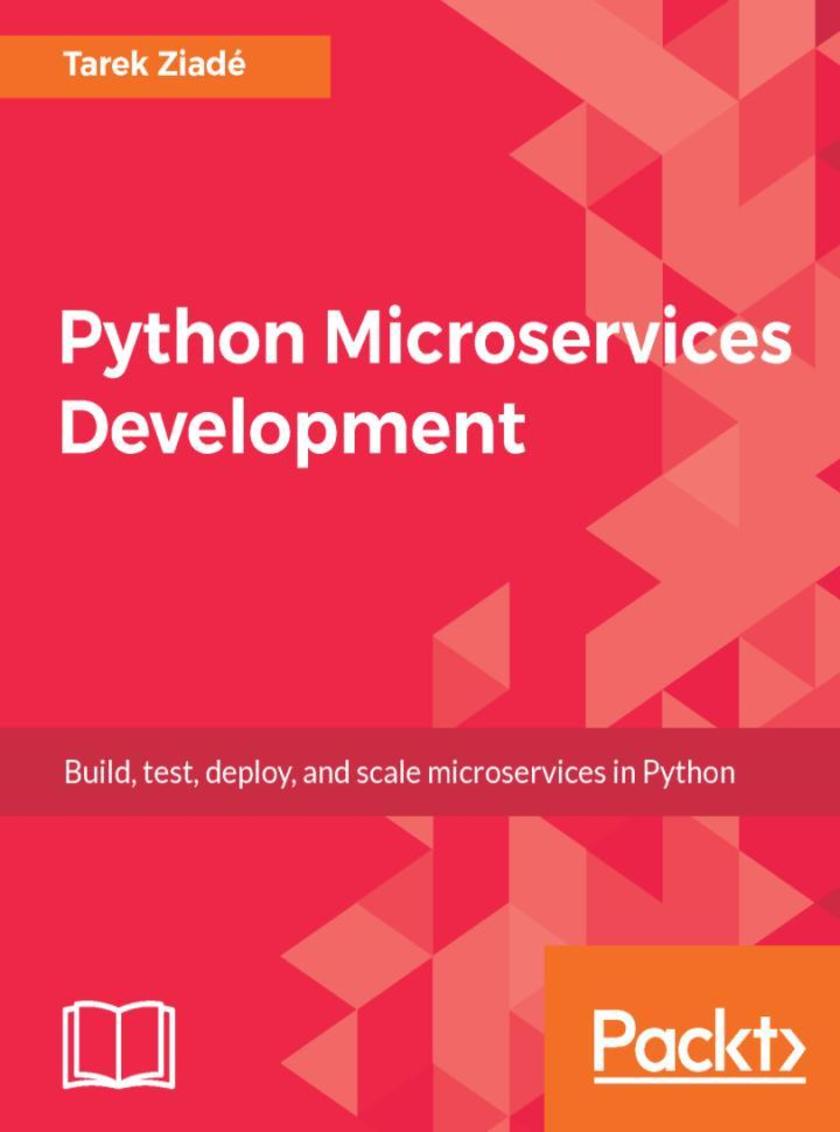
Python Microservices Development
¥80.65
A practical approach to conquering the complexities of Microservices using the Python tooling ecosystem About This Book ? A very useful guide for Python developers who are shifting to the new microservices-based development ? A concise, up-to-date guide to building efficient and lightweight microservices in Python using Flask, Tox, and other tools ? Learn to use Docker containers, CoreOS, and Amazon Web Services to deploy your services Who This Book Is For This book is for developers who have basic knowledge of Python, the command line, and HTTP-based application principles, and those who want to learn how to build, test, scale, and manage Python 3 microservices. No prior experience of writing microservices in Python is assumed. What You Will Learn ? Explore what microservices are and how to design them ? Use Python 3, Flask, Tox, and other tools to build your services using best practices ? Learn how to use a TDD approach ? Discover how to document your microservices ? Configure and package your code in the best way ? Interact with other services ? Secure, monitor, and scale your services ? Deploy your services in Docker containers, CoreOS, and Amazon Web Services In Detail We often deploy our web applications into the cloud, and our code needs to interact with many third-party services. An efficient way to build applications to do this is through microservices architecture. But, in practice, it's hard to get this right due to the complexity of all the pieces interacting with each other. This book will teach you how to overcome these issues and craft applications that are built as small standard units, using all the proven best practices and avoiding the usual traps. It's a practical book: you’ll build everything using Python 3 and its amazing tooling ecosystem. You will understand the principles of TDD and apply them. You will use Flask, Tox, and other tools to build your services using best practices. You will learn how to secure connections between services, and how to * Nginx using Lua to build web application firewall features such as rate limiting. You will also familiarize yourself with Docker’s role in microservices, and use Docker containers, CoreOS, and Amazon Web Services to deploy your services. This book will take you on a journey, ending with the creation of a complete Python application based on microservices. By the end of the book, you will be well versed with the fundamentals of building, designing, testing, and deploying your Python microservices. Style and approach This book is an linear, easy-to-follow guide on how to best design, write, test, and deploy your microservices. It includes real-world examples that will help Python developers create their own Python microservice using the most efficient methods.
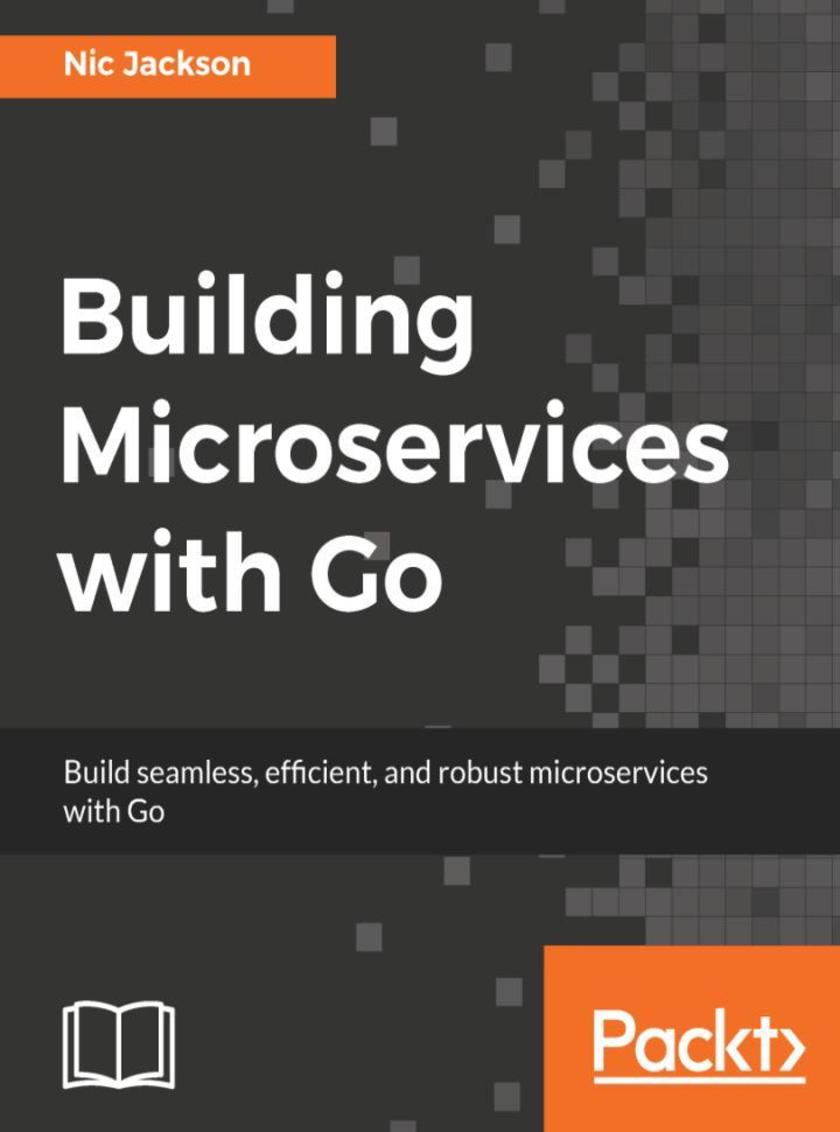
Building Microservices with Go
¥80.65
Your one-stop guide to the common patterns and practices, showing you how to apply these using the Go programming language About This Book ? This short, concise, and practical guide is packed with real-world examples of building microservices with Go ? It is easy to read and will benefit smaller teams who want to extend the functionality of their existing systems ? Using this practical approach will save your money in terms of maintaining a monolithic architecture and demonstrate capabilities in ease of use Who This Book Is For You should have a working knowledge of programming in Go, including writing and compiling basic applications. However, no knowledge of RESTful architecture, microservices, or web services is expected. If you are looking to apply techniques to your own projects, taking your first steps into microservice architecture, this book is for you. What You Will Learn ? Plan a microservice architecture and design a microservice ? Write a microservice with a RESTful API and a database ? Understand the common idioms and common patterns in microservices architecture ? Leverage tools and automation that helps microservices become horizontally scalable ? Get a grounding in containerization with Docker and Docker-Compose, which will greatly accelerate your development lifecycle ? Manage and secure Microservices at scale with monitoring, logging, service discovery, and automation ? Test microservices and integrate API tests in Go In Detail Microservice architecture is sweeping the world as the de facto pattern to build web-based applications. Golang is a language particularly well suited to building them. Its strong community, encouragement of idiomatic style, and statically-linked binary artifacts make integrating it with other technologies and managing microservices at scale consistent and intuitive. This book will teach you the common patterns and practices, showing you how to apply these using the Go programming language. It will teach you the fundamental concepts of architectural design and RESTful communication, and show you patterns that provide manageable code that is supportable in development and at scale in production. We will provide you with examples on how to put these concepts and patterns into practice with Go. Whether you are planning a new application or working in an existing monolith, this book will explain and illustrate with practical examples how teams of all sizes can start solving problems with microservices. It will help you understand Docker and Docker-Compose and how it can be used to isolate microservice dependencies and build environments. We finish off by showing you various techniques to monitor, test, and secure your microservices. By the end, you will know the benefits of system resilience of a microservice and the advantages of Go stack. Style and approach The step-by-step tutorial focuses on building microservices. Each chapter expands upon the previous one, teaching you the main skills and techniques required to be a successful microservice practitioner.
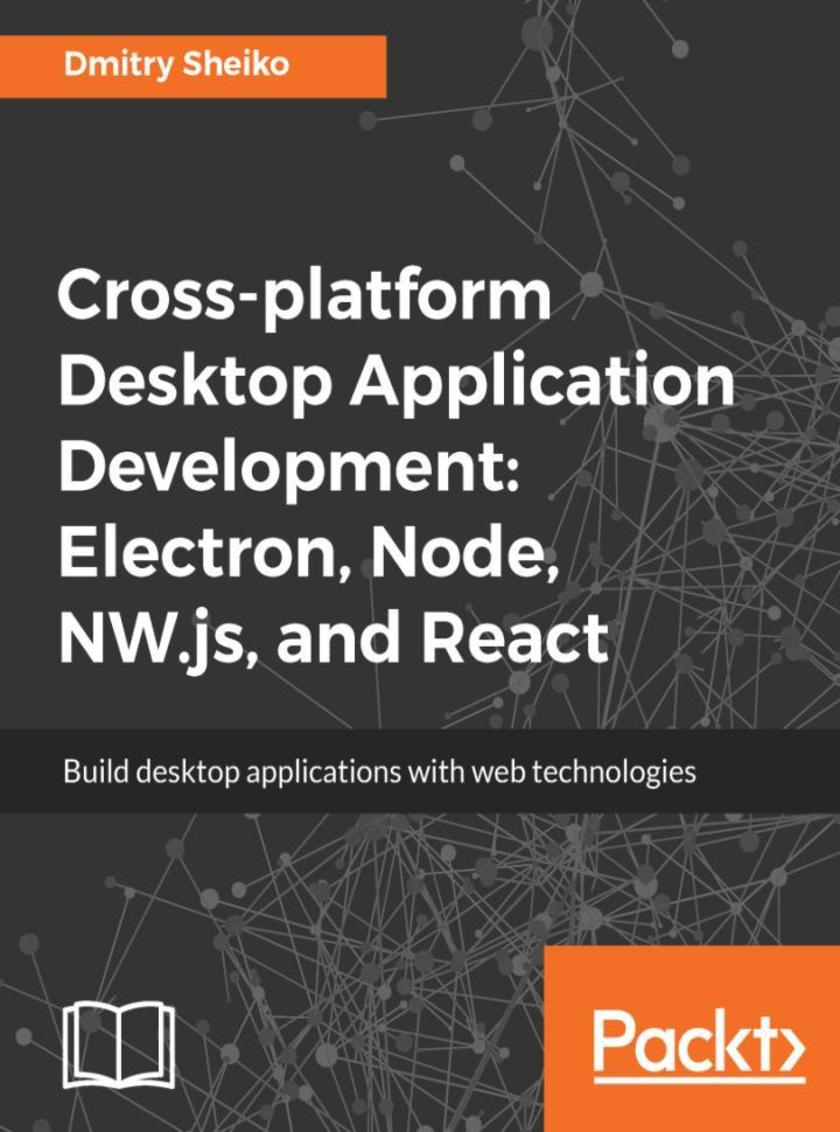
Cross-platform Desktop Application Development: Electron, Node, NW.js, and React
¥80.65
Build powerful cross-platform desktop applications with web technologies such as Node, NW.JS, Electron, and React About This Book ? Build different cross-platform HTML5 desktop applications right from planning, designing, and deployment to enhancement, testing, and delivery ? Forget the pain of cross-platform compatibility and build efficient apps that can be easily deployed on different platforms. ? Build simple to advanced HTML5 desktop apps, by integrating them with other popular frameworks and libraries such as Electron, Node.JS, Nw.js, React, Redux, and TypeScript Who This Book Is For This book has been written for developers interested in creating desktop applications with HTML5. The first part requires essential web-master skills (HTML, CSS, and JavaScript). The second demands minimal experience with React. And finally for the third it would be helpful to have a basic knowledge of React, Redux, and TypeScript. What You Will Learn ? Plan, design, and develop different cross-platform desktop apps ? Application architecture with React and local state ? Application architecture with React and Redux store ? Code design with TypeScript interfaces and specialized types ? CSS and component libraries such as Photonkit, Material UI, and React MDL ? HTML5 APIs such as desktop notifications, WebSockets, WebRTC, and others ? Desktop environment integration APIs of NW.js and Electron ? Package and distribute for NW.JS and Electron In Detail Building and maintaining cross-platform desktop applications with native languages isn’t a trivial task. Since it’s hard to simulate on a foreign platform, packaging and distribution can be quite platform-specific and testing cross-platform apps is pretty complicated.In such scenarios, web technologies such as HTML5 and JavaScript can be your lifesaver. HTML5 desktop applications can be distributed across different platforms (Window, MacOS, and Linux) without any modifications to the code. The book starts with a walk-through on building a simple file explorer from scratch powered by NW.JS. So you will practice the most exciting features of bleeding edge CSS and JavaScript. In addition you will learn to use the desktop environment integration API, source code protection, packaging, and auto-updating with NW.JS. As the second application you will build a chat-system example implemented with Electron and React. While developing the chat app, you will get Photonkit. Next, you will create a screen capturer with NW.JS, React, and Redux. Finally, you will examine an RSS-reader built with TypeScript, React, Redux, and Electron. Generic UI components will be reused from the React MDL library. By the end of the book, you will have built four desktop apps. You will have covered everything from planning, designing, and development to the enhancement, testing, and delivery of these apps. Style and approach Filled with real world examples, this book teaches you to build cross-platform desktop apps right from scratch using a step-by-step approach.
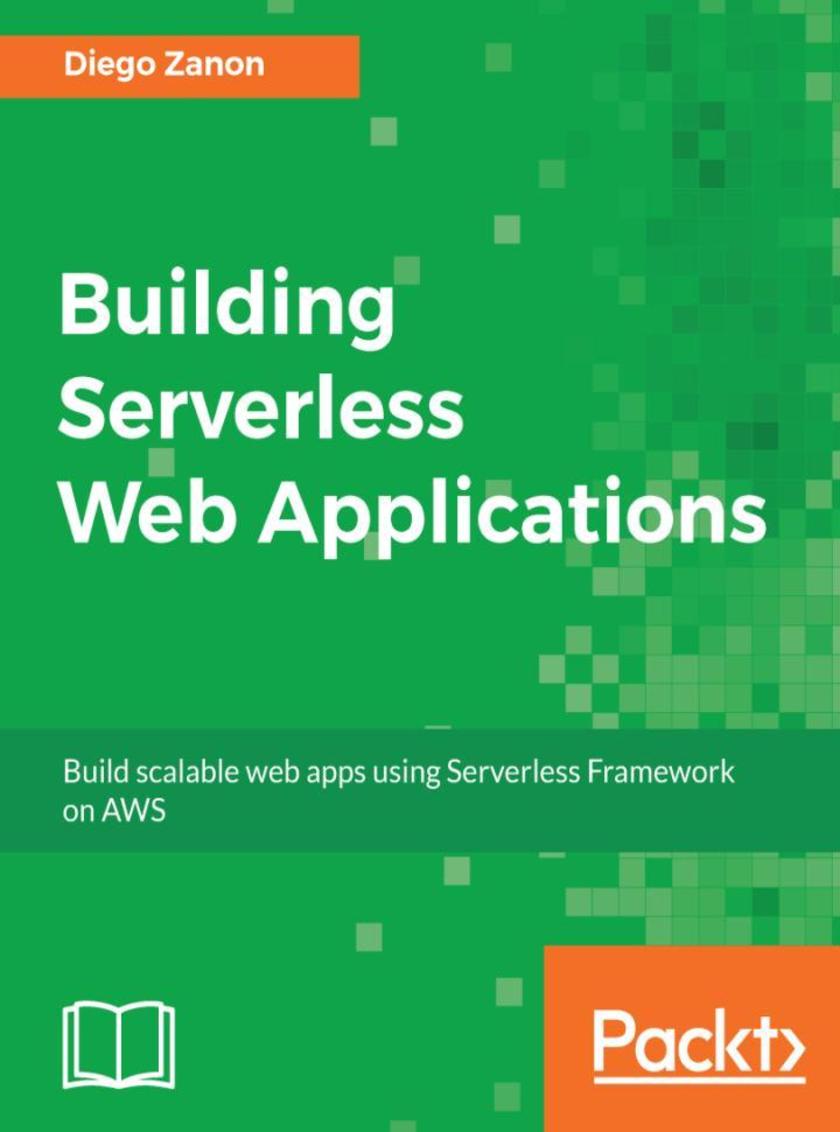
Building Serverless Web Applications
¥80.65
Build scalable, efficient, and highly available web apps using AWS About This Book ? Get an in-depth understanding of the serverless model ? Build a complete serverless web application end to end ? Learn how to use the Serverless Framework to improve your productivity Who This Book Is For If you’re looking to learn more about scalable and cost-efficient architectures, this book is for you. Basic knowledge of Node.js skills or familiarity with cloud services is required. For other topics, we cover the basics. What You Will Learn ? Get a grasp of the pros and cons of going serverless and its use cases ? Discover how you can use the building blocks of AWS to your advantage ? Set up the environment and create a basic app with the Serverless Framework ? Host static files on S3 and CloudFront with HTTPS support ? Build a sample application with a frontend using React as an SPA ? Develop the Node.js backend to handle requests and connect to a SimpleDB database ? Secure your applications with authentication and authorization ? Implement the publish-subscribe pattern to handle notifications in a serverless application ? Create tests, define the workflow for deployment, and monitor your app In Detail This book will equip you with the knowledge needed to build your own serverless apps by showing you how to set up different services while making your application scalable, highly available, and efficient. We begin by giving you an idea of what it means to go serverless, exploring the pros and cons of the serverless model and its use cases. Next, you will be introduced to the AWS services that will be used throughout the book, how to estimate costs, and how to set up and use the Serverless Framework. From here, you will start to build an entire serverless project of an online store, beginning with a React SPA frontend hosted on AWS followed by a serverless backend with API Gateway and Lambda functions. You will also learn to access data from a SimpleDB database, secure the application with authentication and authorization, and implement serverless notifications for browsers using AWS IoT. This book will describe how to monitor the performance, efficiency, and errors of your apps and conclude by teaching you how to test and deploy your applications. Style and approach This book takes a step-by-step approach on how to use the Serverless Framework and AWS services to build Serverless Applications. It will give you a hands-on feeling, allowing you to practice while reading. It provides a brief introduction of concepts while keeping the focus on the practical skills required to develop applications.
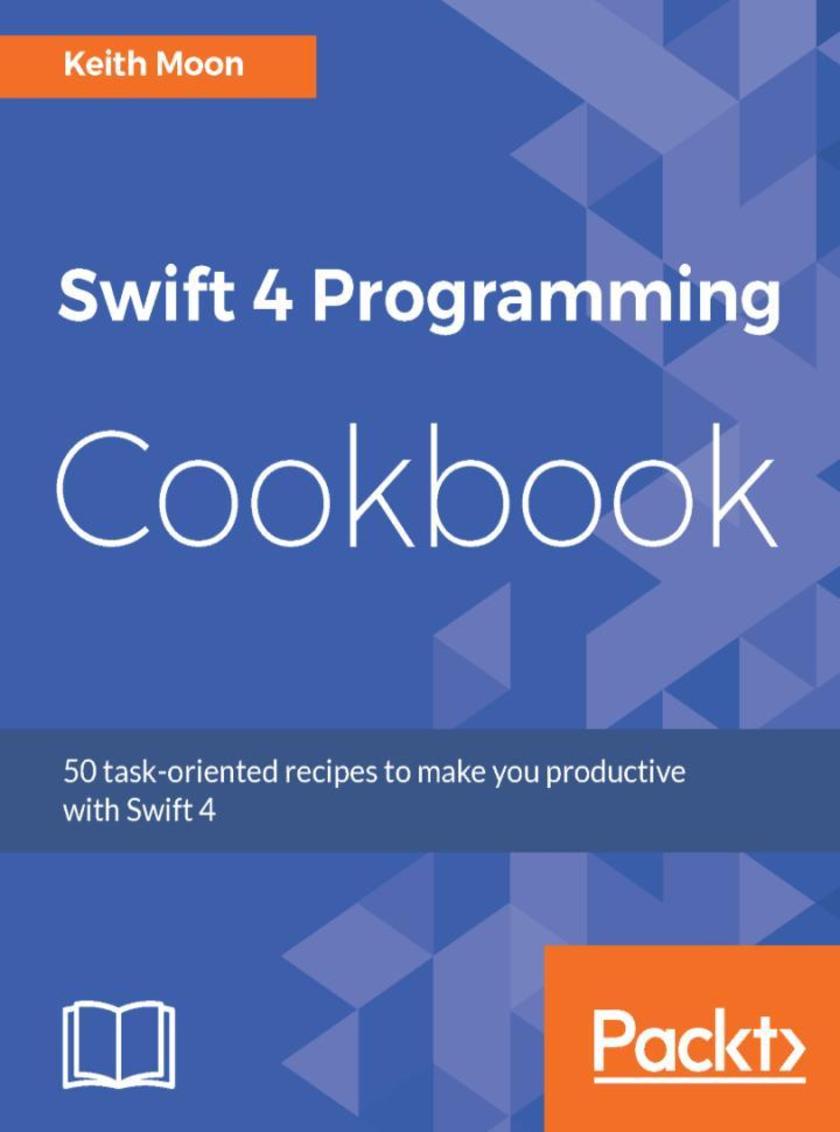
Swift 4 Programming Cookbook
¥80.65
Over 50 recipes to help you quickly and efficiently build applications with Swift 4 and Xcode 9 About This Book ? Write robust and efficient code and avoid common pitfalls using Swift 4 ? Get a comprehensive coverage of the tools and techniques needed to create multi-platform apps with Swift 4 ? Packed with easy-to-follow recipes, this book will help you develop code using the latest version of Swift Who This Book Is For If you are looking for a book to help you learn about the diverse features offered by Swift 4 along with tips and tricks to efficiently code and build applications, then this book is for you. Basic knowledge of Swift or general programming concepts will be beneficial. What You Will Learn ? Explore basic to advanced concepts in Swift 4 Programming ? Unleash advanced features of Apple's Xcode 9 IDE and Swift Playgrounds ? Learn about the conditional statements, loops, and how to handle errors in Swift ? Define flexible classes and structs using Generics, and learn about the advanced operators, and create custom operators ? Explore functionalities outside of the standard libraries of Swift ? Import your own custom functionality into Swift Playgrounds ? Run Swift on Linux and investigate server-side programming with the server side framework Vapor In Detail Swift 4 is an exciting, multi-platform, general-purpose programming language. Being open source, modern and easy to use has made Swift one of the fastest growing programming languages. If you interested in exploring it, then this book is what you need. The book begins with an introduction to the basic building blocks of Swift 4, its syntax and the functionalities of Swift constructs. Then, introduces you to Apple's Xcode 9 IDE and Swift Playgrounds, which provide an ideal platform to write, execute, and debug the codes thus initiating your development process. Next, you'll learn to bundle variables into tuples, set order to your data with an array, store key-value pairs with dictionaries and you'll learn how to use the property observers. Later, explore the decision-making and control structures in Swift and learn how to handle errors in Swift 4. Then you'll, examine the advanced features of Swift, generics and operators, and then explore the functionalities outside of the standard library, provided by frameworks such as Foundation and UIKit. Also, you'll explore advanced features of Swift Playgrounds. At the end of the book, you'll learn server-side programming aspect of Swift 4 and see how to run Swift on Linux and then investigate Vapor, one of the most popular server-side frameworks for Swift. Style and approach Each recipe addresses a specific problem, with a detailed discussion that explains the solution and offers insight into how it works.
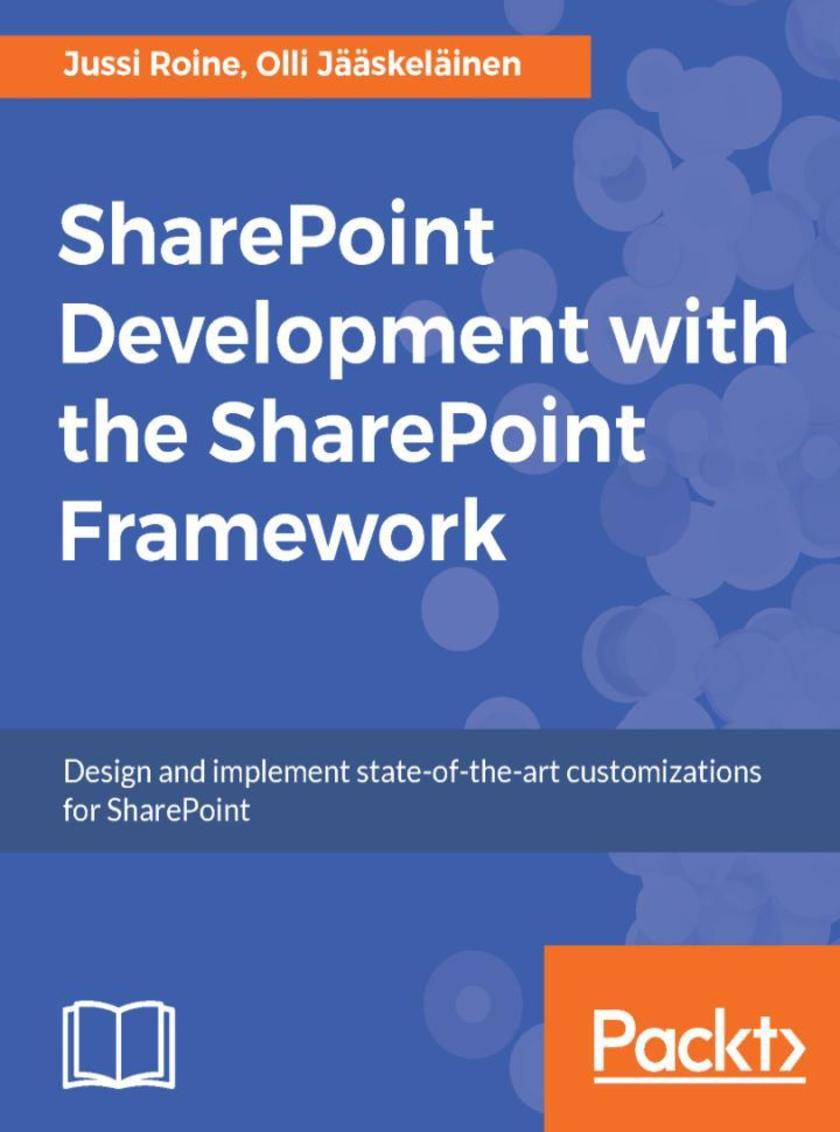
SharePoint Development with the SharePoint Framework
¥80.65
Design and create beautiful solutions using modern development tools for SharePoint Online About This Book ? Get the best out of the latest Sharepoint Framework and leverage the Sharepoint RESTful and JSOM APIs. ? Develop efficient client side applications with JavaScript injection and Sharepoint Addins. ? Get the best tips and tricks on designing your website flawlessly. Who This Book Is For This book targets current SharePoint developers, as well as people starting their journey on SharePoint development. The reader must have basic web development programming knowledge, including JavaScript and CSS. The reader should have familiarity using and managing SharePoint-based collaboration sites. What You Will Learn ? Understand what the SharePoint Framework is ? Create modern solutions using the new tools, approaches and frameworks ? Learn how to use Visual Studio Code for effective SharePoint development ? Package and deploy your code, using automation as needed ? Work with content and data stored in SharePoint ? Benefit from third party frameworks without having to build your own frameworks ? Debug and troubleshoot your code with ease ? Configure security in your application In Detail SharePoint is one of Microsoft's best known web platforms. A loyal audience of developers, IT Pros and power users use it to build line of business solutions. The SharePoint Framework (SPFx) is a great new option for developing SharePoint solutions. Many developers are creating full-trust based solutions or add-in solutions, while also figuring out where and how SPFx fits in the big picture. This book shows you how design, build, deploy and manage SPFx based solutions for SharePoint Online and SharePoint 2016. The book starts by getting you familiar with the basic capabilities of SPFx. After that, we will walk through the tool-chain on how to best create production-ready solutions that can be easily deployed manually or fully automated throughout your target Office 365 tenants. We describe how to configure and use Visual Studio Code, the de facto development environment for SPFx-based solutions. Next, we provide guidance and a solid approach to packaging and deploying your code. We also present a straightforward approach to troubleshooting and debugging your code an environment where business applications run on the client side instead of the server side. Style and approach The approach will be that of a practical tutorial which will take you through every topic using code samples and working examples.
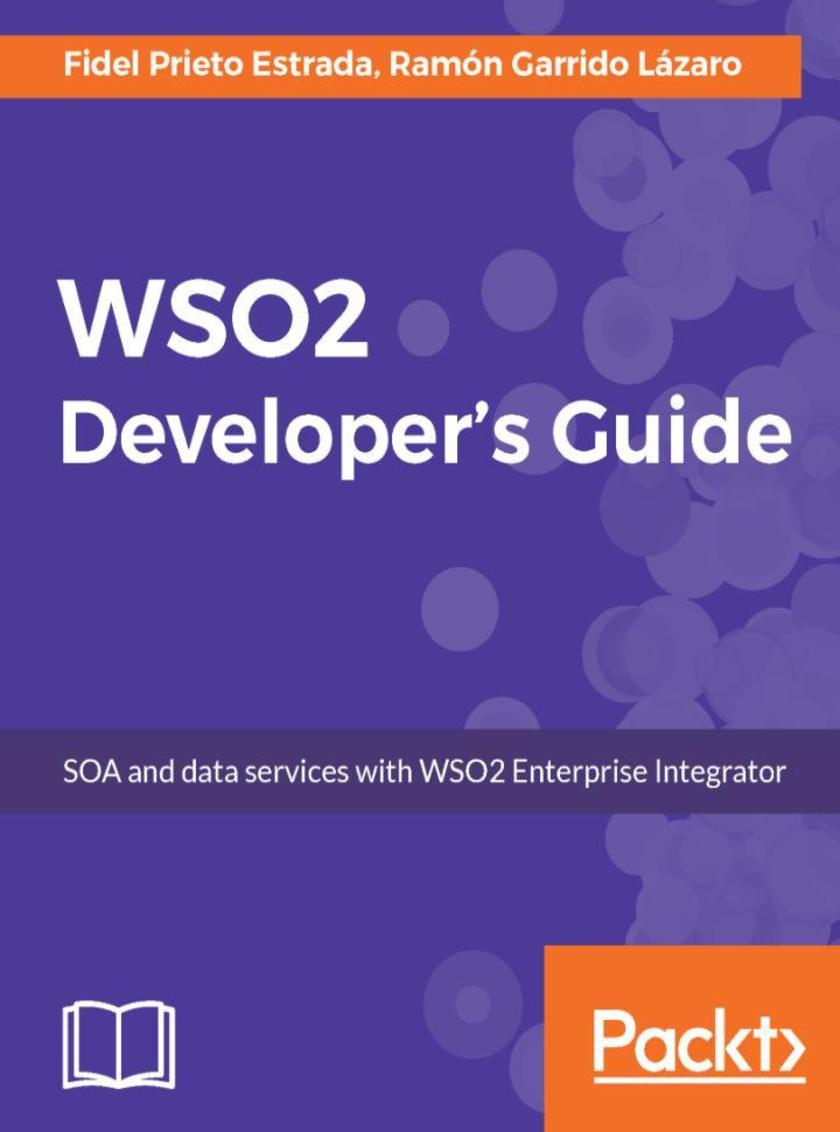
WSO2 Developer’s Guide
¥80.65
WSO2 Made Simple – dive deep into the core concepts of WSO2 to overcome the challenges faced while using the Enterprise Integrator About This Book ? Design, create, and publish services in the WSO2 technology ? Integrate the WSO2 Enterprise Integrator with other components and servers ? Log and test deployed services Who This Book Is For If you are a Java solutions architect or developer and are keen to understand how to build enterprise applications with WSO2, this book is for you. No prior knowledge of WSO2 is expected. What You Will Learn ? Configure WSO2 Enterprise Integrator server in a production environment ? Create SOAP Proxies and REST APIs ? Interact with WSO2 Message Broker ? Write services using the new language: Ballerina ? Schedule automatic tasks for the services you create ? Manage log messages depending on the log level of the system ? Integrate with social networks such as Twitter, Facebook, Instagram, and Yammer ? Test SOAP Services using the Tryit feature and SoapUI tool ? Work with Quality of Services In Detail WSO2 Enterprise Integrator brings together the most powerful servers provided by the WSO2 company for your SOA infrastructure. As an Enterprise Service Bus (ESB), WSO2 Enterprise Integrator provides greater flexibility and agility to meet growing enterprise demands, whereas, as a Data Services Server (DSS), it provides an easy-to-use platform for integrating data stores, creating composite views across different data sources, and hosting data services. Using real-world scenarios, this book helps you build a solid foundation in developing enterprise applications with powerful data integration capabilities using the WSO2 servers. The book gets you started by brushing up your knowledge about SOA architecture and how it can be implemented through WSO2. It will help build your expertise with the core concepts of ESB such as building proxies, sequences, endpoints, and how to work with these in WSO2. Going further, you will also get well-acquainted with DSS data service concepts such as configuring data services, tasks, events, testing, and much more. The book will also cover API management techniques. Along with ESB and DSS, you will also learn about business process servers, the rules server and other components that together provide the control and robustness your enterprise applications will need. With practical use cases, the book covers typical daily scenarios you will come across while using these servers to give you hands-on experience. Style and approach The book is a complete guide and helps you get the right start—from understanding SOA architectures to getting valuable experience with two important integration servers such as ESB and DSS. It will include some real-world practical scenarios to help you master the best practices followed right across the industry and overcome the challenges you're likely to face on a daily basis.
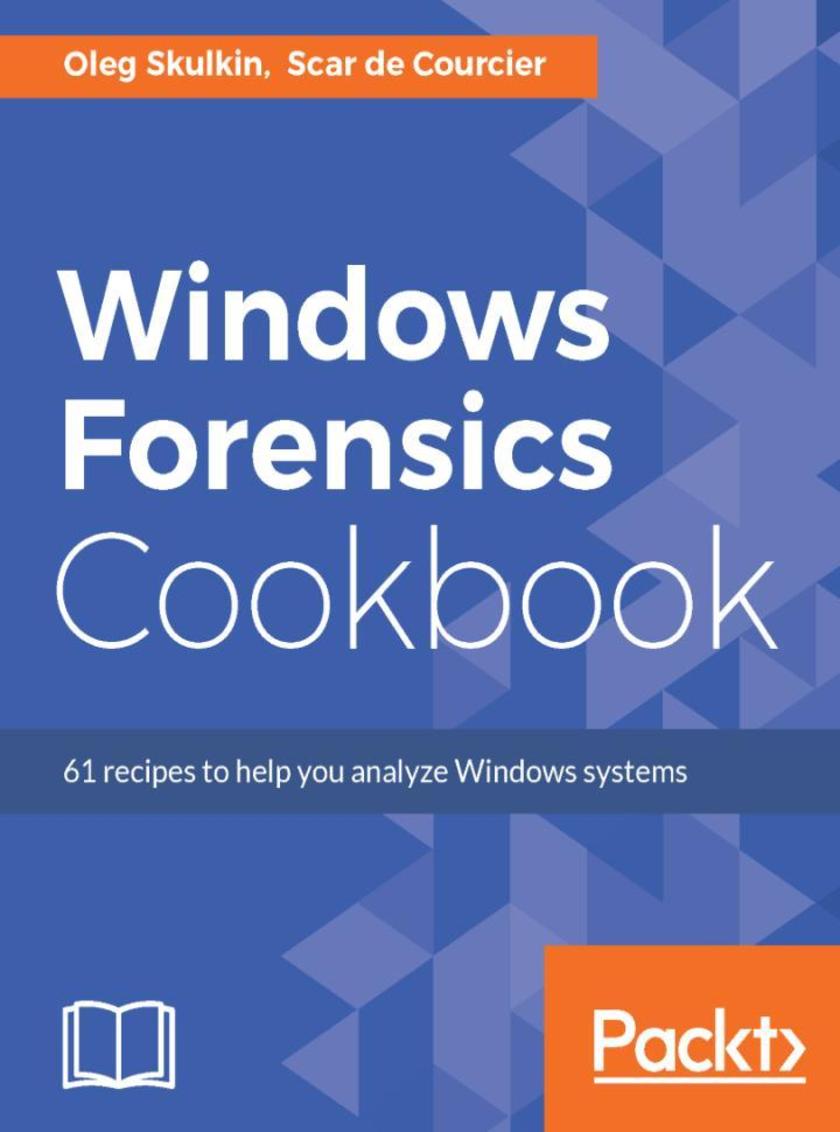
Windows Forensics Cookbook
¥80.65
Maximize the power of Windows Forensics to perform highly effective forensic investigations About This Book ? Prepare and perform investigations using powerful tools for Windows, ? Collect and validate evidence from suspects and computers and uncover clues that are otherwise difficult ? Packed with powerful recipes to perform highly effective field investigations Who This Book Is For If you are a forensic analyst or incident response professional who wants to perform computer forensics investigations for the Windows platform and expand your took kit, then this book is for you. What You Will Learn ? Understand the challenges of acquiring evidence from Windows systems and overcome them ? Acquire and analyze Windows memory and drive data with modern forensic tools. ? Extract and analyze data from Windows file systems, shadow copies and the registry ? Understand the main Windows system artifacts and learn how to parse data from them using forensic tools ? See a forensic analysis of common web browsers, mailboxes, and instant messenger services ? Discover how Windows 10 differs from previous versions and how to overcome the specific challenges it presents ? Create a graphical timeline and visualize data, which can then be incorporated into the final report ? Troubleshoot issues that arise while performing Windows forensics In Detail Windows Forensics Cookbook provides recipes to overcome forensic challenges and helps you carry out effective investigations easily on a Windows platform. You will begin with a refresher on digital forensics and evidence acquisition, which will help you to understand the challenges faced while acquiring evidence from Windows systems. Next you will learn to acquire Windows memory data and analyze Windows systems with modern forensic tools. We also cover some more in-depth elements of forensic analysis, such as how to analyze data from Windows system artifacts, parse data from the most commonly-used web browsers and email services, and effectively report on digital forensic investigations. You will see how Windows 10 is different from previous versions and how you can overcome the specific challenges it brings. Finally, you will learn to troubleshoot issues that arise while performing digital forensic investigations. By the end of the book, you will be able to carry out forensics investigations efficiently. Style and approach This practical guide filled with hands-on, actionable recipes to detect, capture, and recover digital artifacts and deliver impeccable forensic outcomes.
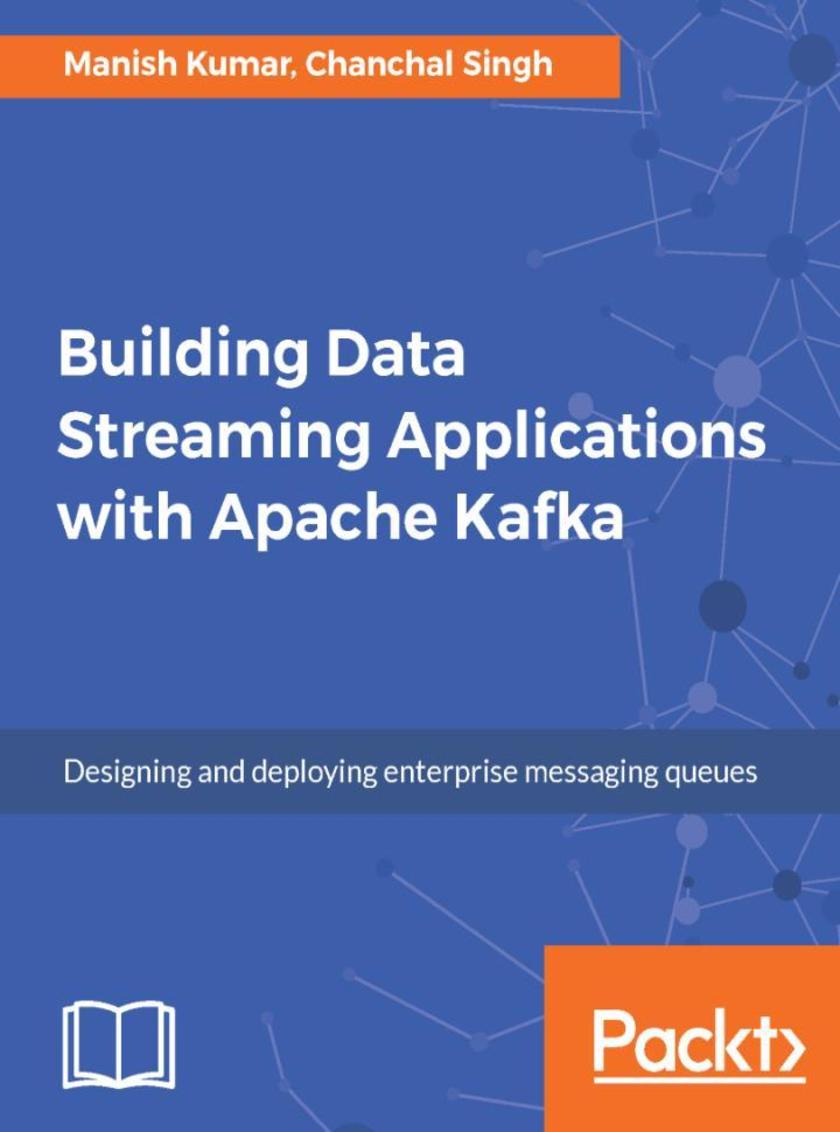
Building Data Streaming Applications with Apache Kafka
¥80.65
Design and administer fast, reliable enterprise messaging systems with Apache Kafka About This Book ? Build efficient real-time streaming applications in Apache Kafka to process data streams of data ? Master the core Kafka APIs to set up Apache Kafka clusters and start writing message producers and consumers ? A comprehensive guide to help you get a solid grasp of the Apache Kafka concepts in Apache Kafka with pracitcalpractical examples Who This Book Is For If you want to learn how to use Apache Kafka and the different tools in the Kafka ecosystem in the easiest possible manner, this book is for you. Some programming experience with Java is required to get the most out of this book What You Will Learn ? Learn the basics of Apache Kafka from scratch ? Use the basic building blocks of a streaming application ? Design effective streaming applications with Kafka using Spark, Storm &, and Heron ? Understand the importance of a low -latency , high- throughput, and fault-tolerant messaging system ? Make effective capacity planning while deploying your Kafka Application ? Understand and implement the best security practices In Detail Apache Kafka is a popular distributed streaming platform that acts as a messaging queue or an enterprise messaging system. It lets you publish and subscribe to a stream of records, and process them in a fault-tolerant way as they occur. This book is a comprehensive guide to designing and architecting enterprise-grade streaming applications using Apache Kafka and other big data tools. It includes best practices for building such applications, and tackles some common challenges such as how to use Kafka efficiently and handle high data volumes with ease. This book first takes you through understanding the type messaging system and then provides a thorough introduction to Apache Kafka and its internal details. The second part of the book takes you through designing streaming application using various frameworks and tools such as Apache Spark, Apache Storm, and more. Once you grasp the basics, we will take you through more advanced concepts in Apache Kafka such as capacity planning and security. By the end of this book, you will have all the information you need to be comfortable with using Apache Kafka, and to design efficient streaming data applications with it. Style and approach A step-by –step, comprehensive guide filled with practical and real- world examples
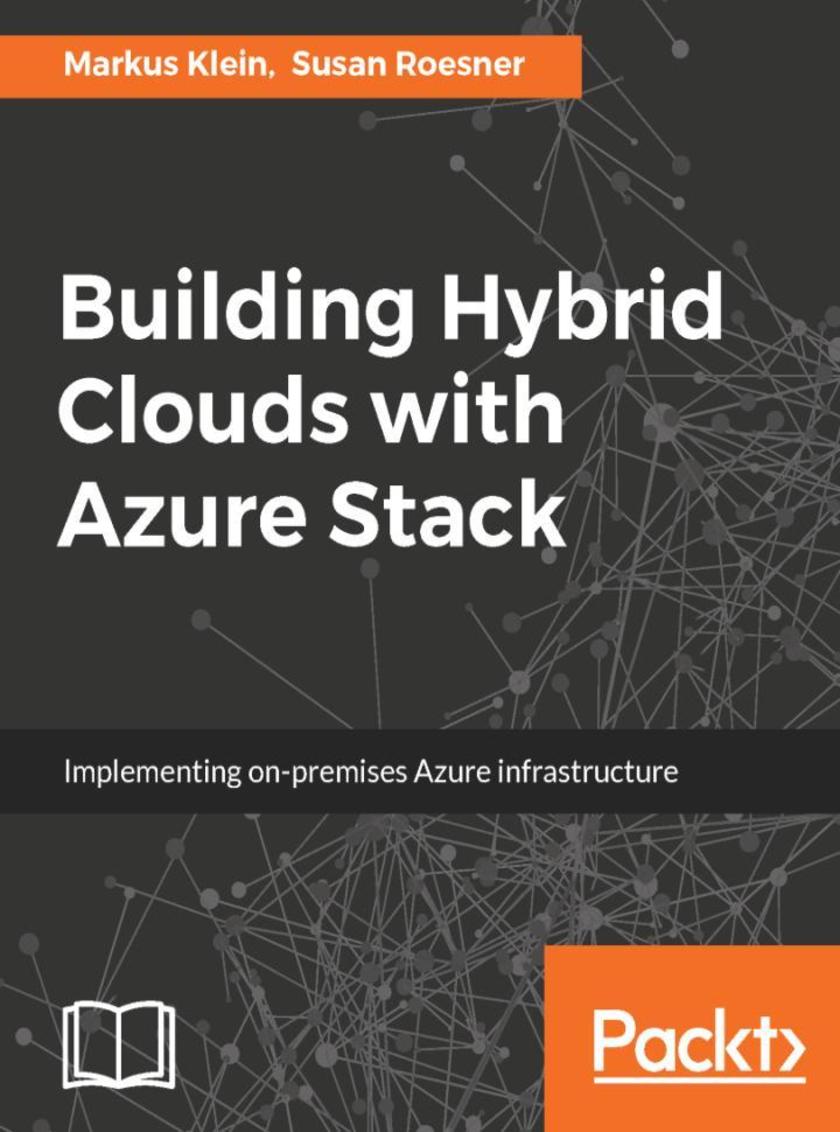
Building Hybrid Clouds with Azure Stack
¥80.65
Bring the power of Microsoft Azure Hybrid Cloud technology to your datacenter. About This Book ? Build and deploy software-defined infrastructures and deliver Azure-based IaaS and Paas services in your datacenter ? Use Azure Stack to leverage your current infrastructure with Microsoft Hybrid Cloud and get the best of both worlds ? Unlock greater levels of performance and flexibility and save your organization money, time, and resources Who This Book Is For The book is for administrators and architects who are planning to implement or administer a hybrid cloud infrastructure using Microsoft Cloud Technology. This book is ideal for those who are looking forward to implement and run a hybrid cloud infrastructure with PaaS, SaaS and IaaS services. What You Will Learn ? Gain a clear understanding of Azure Stack design ? Set up storage, network and compute services in Azure Stack ? Implement and run a hybrid cloud infrastructure with PaaS, SaaS, and IaaS services ? Get an overview of the automation options in Azure Stack ? Integrate Azure public services such as multi-factor authentication and Azure AD with Azure Stack ? Learn about the services available in the future In Detail Azure Stack is all about creating fewer gaps between on-premise and public cloud application deployment. Azure Stack is the next logical evolution of Microsoft Cloud Services to create a true Hybrid Cloud-ready application. This book provides an introduction to Microsoft Azure Stack and the Cloud First Approach. Starting with an introduction to Microsoft Azure Stack Architecture, the book will help you plan and deploy your Microsoft Azure Stack. Next, you will learn about the Network and Storage option in Microsoft Azure Stack and you'll create your own private cloud solution. Finally, you will understand how to integrate Public Cloud Services with Microsoft Azure Stack and extend it using the 3rd Party Resource Provider. After reading the book, you will have a good understanding of an end-to-end process for designing, implementing, offering, and supporting cloud solutions for enterprises or service providers. Style and approach This book is a practical guide to help you unlock a hybrid cloud stack using Azure Stack. Using a straight forward and easy to implement approach, this book guides you through the basic planning for a hybrid cloud stack, describes the infrastructure technologies Azure Stack is based on, and explains how to deploy and administer an Azure Stack-based infrastructure.
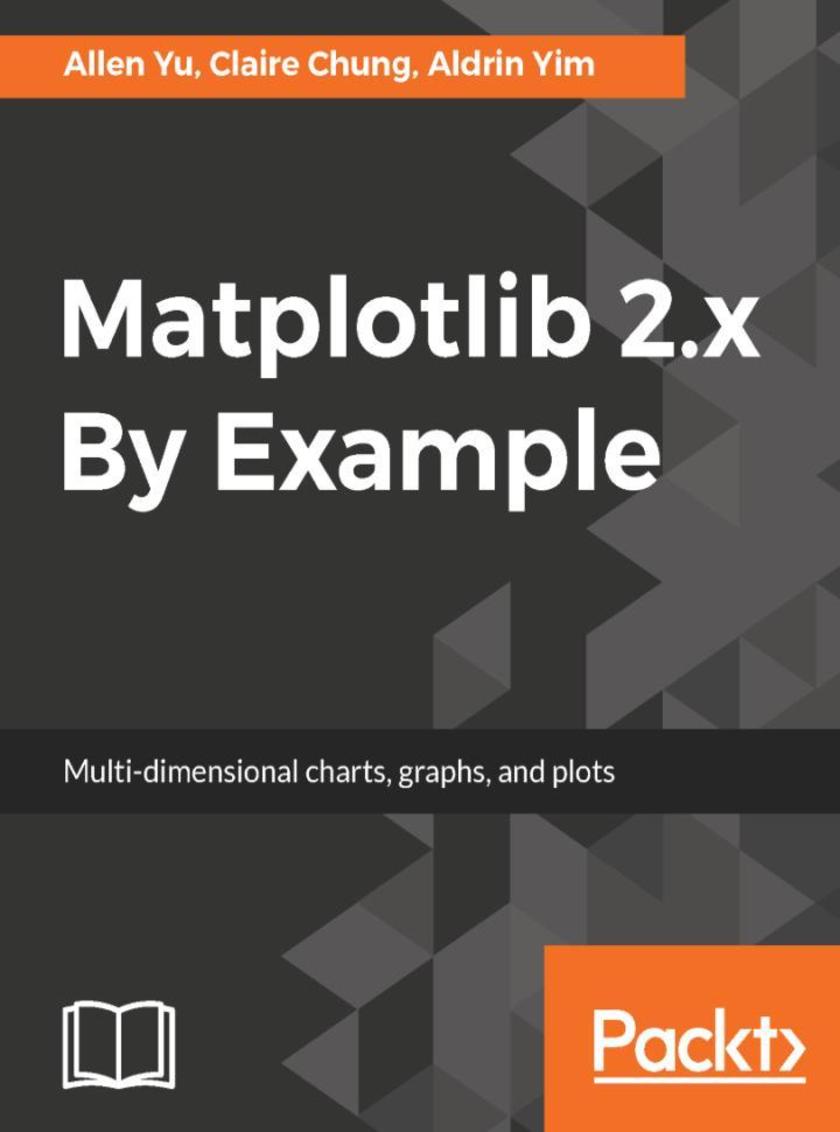
Matplotlib 2.x By Example
¥80.65
Unlock deeper insights into visualization in form of 2D and 3D graphs using Matplotlib 2.x About This Book ? Create and customize live graphs, by adding style, color, font to make appealing graphs. ? A complete guide with insightful use cases and examples to perform data visualizations with Matplotlib's extensive toolkits. ? Create timestamp data visualizations on 2D and 3D graphs in form of plots, histogram, bar charts, scatterplots and more. Who This Book Is For This book is for anyone interested in data visualization, to get insights from big data with Python and Matplotlib 2.x. With this book you will be able to extend your knowledge and learn how to use python code in order to visualize your data with Matplotlib. Basic knowledge of Python is expected. What You Will Learn ? Familiarize with the latest features in Matplotlib 2.x ? Create data visualizations on 2D and 3D charts in the form of bar charts, bubble charts, heat maps, histograms, scatter plots, stacked area charts, swarm plots and many more. ? Make clear and appealing figures for scientific publications. ? Create interactive charts and animation. ? Extend the functionalities of Matplotlib with third-party packages, such as Basemap, GeoPandas, Mplot3d, Pandas, Scikit-learn, and Seaborn. ? Design intuitive infographics for effective storytelling. In Detail Big data analytics are driving innovations in scientific research, digital marketing, policy-making and much more. Matplotlib offers simple but powerful plotting interface, versatile plot types and robust customization. Matplotlib 2.x By Example illustrates the methods and applications of various plot types through real world examples. It begins by giving readers the basic know-how on how to create and customize plots by Matplotlib. It further covers how to plot different types of economic data in the form of 2D and 3D graphs, which give insights from a deluge of data from public repositories, such as Quandl Finance. You will learn to visualize geographical data on maps and implement interactive charts. By the end of this book, you will become well versed with Matplotlib in your day-to-day work to perform advanced data visualization. This book will guide you to prepare high quality figures for manu*s and presentations. You will learn to create intuitive info-graphics and reshaping your message crisply understandable. Style and approach Step by step comprehensive guide filled with real world examples.
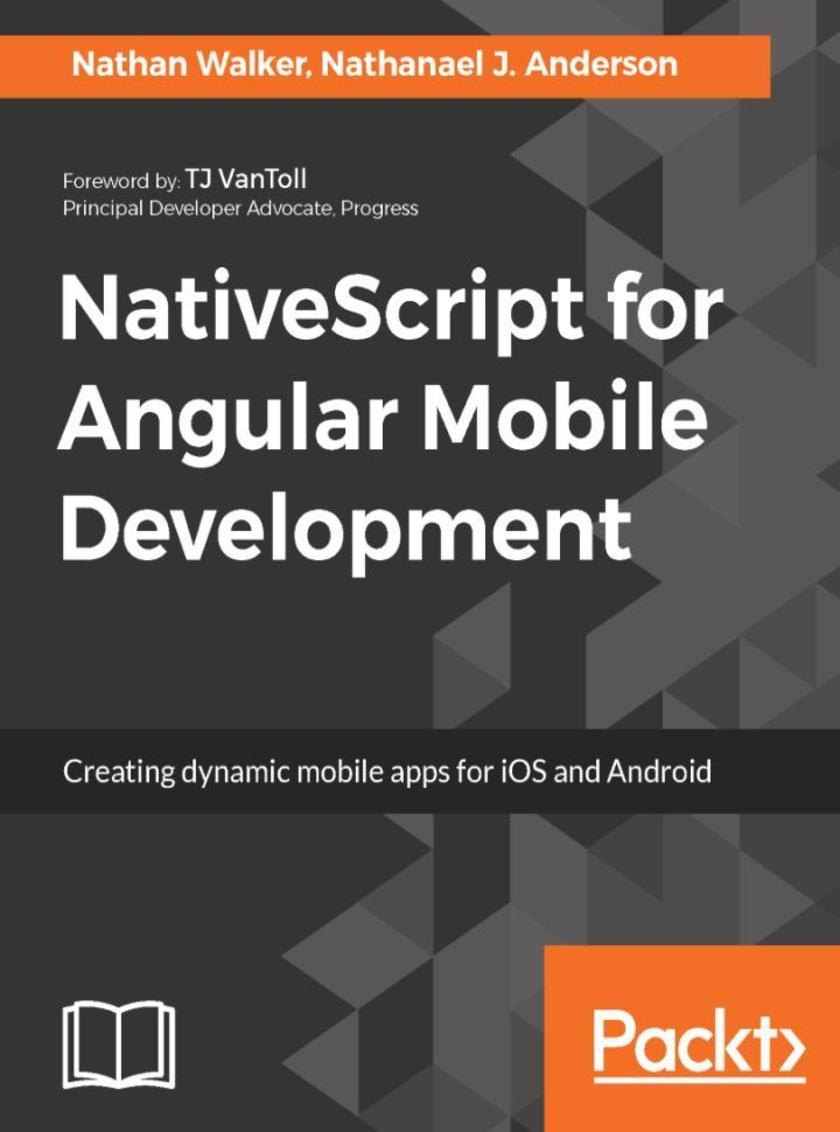
NativeScript for Angular Mobile Development
¥80.65
Learn NativeScript to build native mobile applications with Angular, TypeScript, JavaScript About This Book ? Power packed hands-on guide to help you become pro-efficient with NativeScript ? Harness the power of your web development skills with JavaScript and Angular to build cross-platform mobile apps ? Create highly maintainable and feature-rich apps with TypeScript and NativeScript APIs Who This Book Is For This book assumes you have a general understanding of TypeScript, have heard of NativeScript and know what it's about, and are familiar with Angular (2.0). You don't need to be an expert in any of these technologies, but having some sense of them before reading is recommended this book, which is ideal for intermediate to advanced users. What You Will Learn ? Bootstrap a NativeScript for Angular app ? Best practices for project organization ? Style your app with CSS/SASS ? Use Angular together with NativeScript to create cross-platform mobile apps ? Take advantage of powerful Angular features, such as Dependency Injection, Components, Directives, Pipes, and NgModules right within your NativeScript apps ?Gain insight into great project organization and best practices ?Use Objective C/Swift and Java APIs directly from TypeScript ?Use rich framework features and third-party plugins ?Style your app with CSS/SASS ?Integrate @ngrx/store + @ngrx/effects to help with state management ?Test your app with Karma and Appium In Detail NativeScript is an open source framework that is built by Progress in order to build truly native mobile apps with TypeScript, JavaScript or just Angular which is an open source framework built by Google that offers declarative templates, dependency injection, and fully featured modules to build rich applications. Angular’s versatile view handling architecture allows your views to be rendered as highly performant UI components native to iOS and Android mobile platforms. This decoupling of the view rendering layer in Angular combined with the power of native APIs with NativeScript have together created the powerful and exciting technology stack of NativeScript for Angular. This book focuses on the key concepts that you will need to know to build a NativeScript for Angular mobile app for iOS and Android. We’ll build a fun multitrack recording studio app, touching on powerful key concepts from both technologies that you may need to know when you start building an app of your own. The structure of the book takes the reader from a void to a deployed app on both the App Store and Google Play, serving as a reference guide and valuable tips/tricks handbook. By the end of this book, you’ll know majority of key concepts needed to build a successful NativeScript for Angular app. Style and approach This step-by-step advanced tutorial focuses on the key concepts you need to know to build a NativeScript for Angular mobile app for iOS and Android.




 购物车
购物车 个人中心
个人中心



